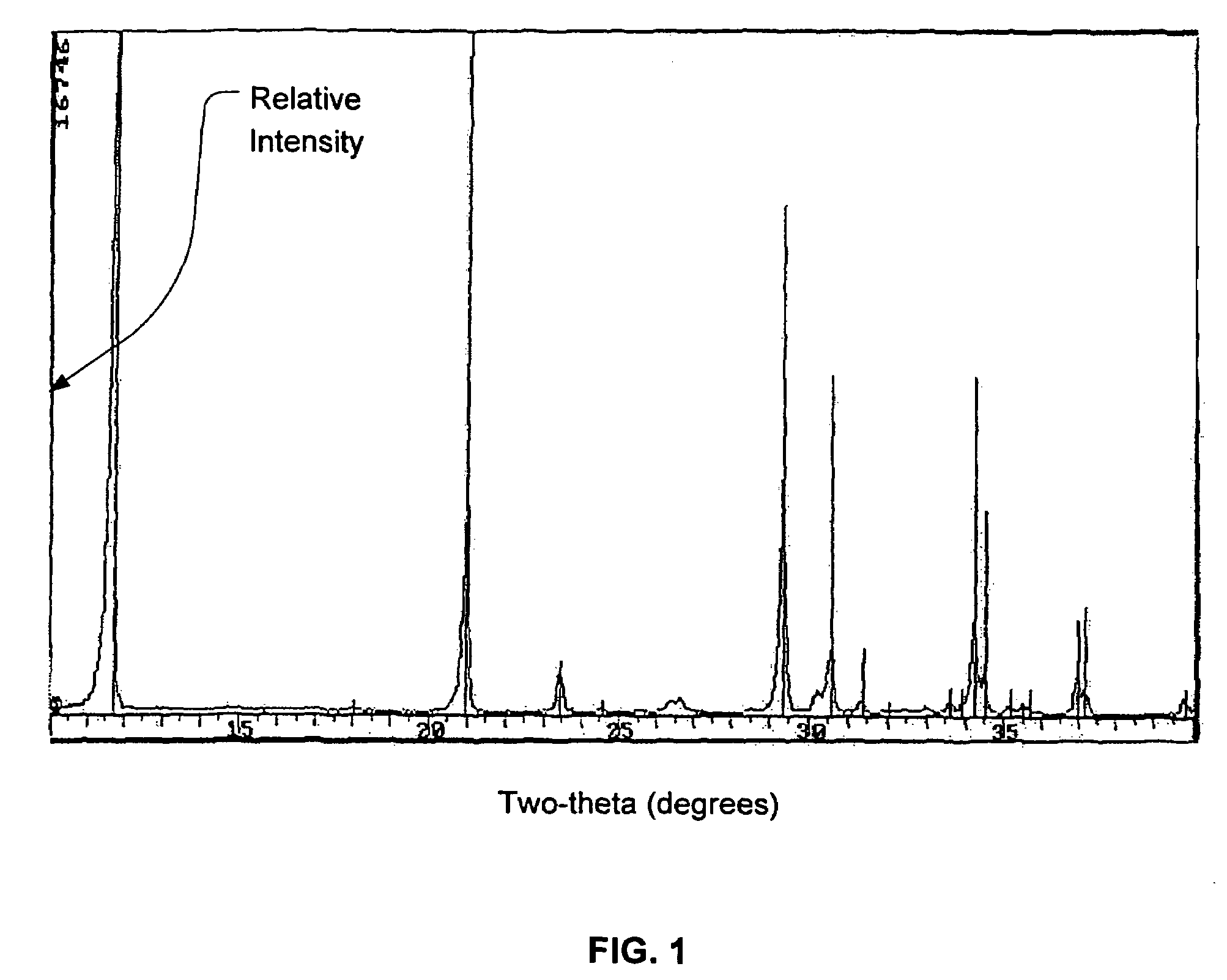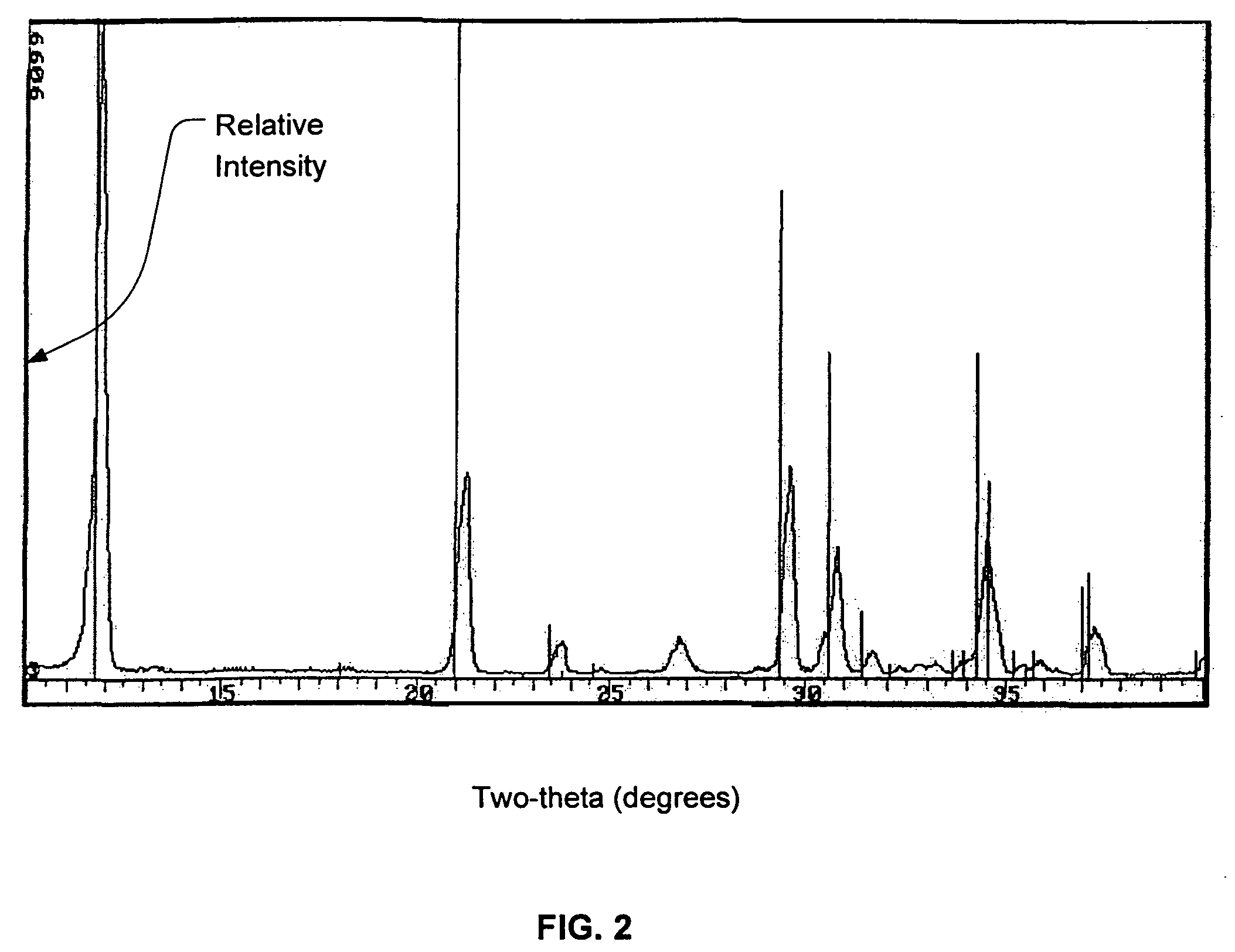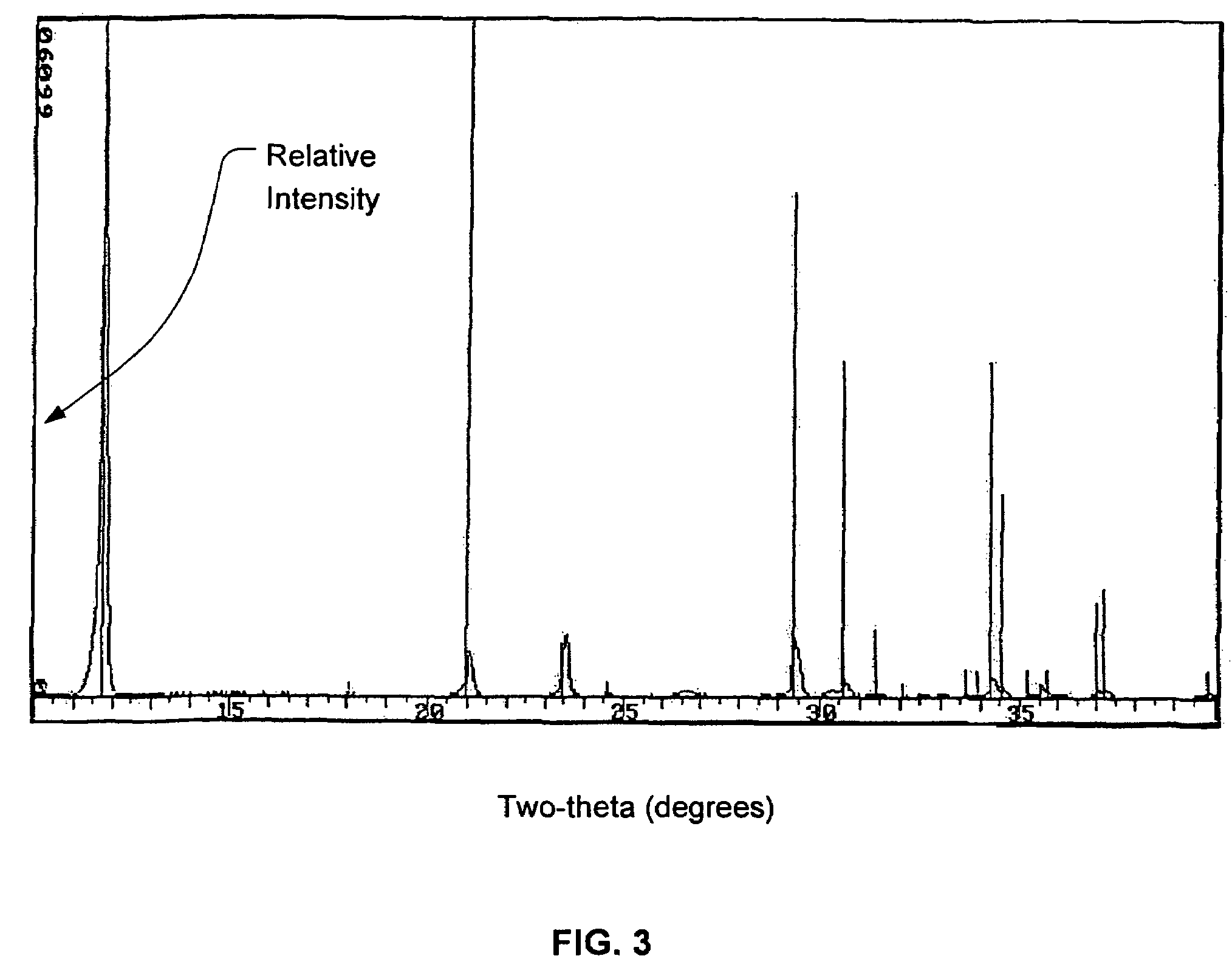Injectable calcium phosphate cement
a calcium phosphate cement and injection technology, applied in the field of calcium phosphate minerals, can solve the problems of deteriorating effects, insufficient study of long-term stability of these components, and prior art powder mixtures of calcium phosphate lose their ability to set after a whil
- Summary
- Abstract
- Description
- Claims
- Application Information
AI Technical Summary
Benefits of technology
Problems solved by technology
Method used
Image
Examples
example 1
Production of DCPD with 40 ppm of Magnesium
[0092](1) 30% Phosphoric Acid Solution Preparation With 40 ppm Magnesium Addition
[0093]To make the required 30% concentration of orthophosphoric acid (H3PO4), in a 5 ltr stainless beaker, 261 + / −2 mls of 85% orthophosphoric acid was added to 737+ / −2 mls of deionized water and the beaker was placed on top of a hot plate set to 45° C. Then the temperature probe was placed in the beaker to measure the temperature of the acid solution and the hot plate was turned on to heat the solution to 45° C. The solution was then stirred at a speed of 200+ / −10 rpm to ensure that the probe was measuring a true representation of the beaker content. While the acid solution was being heated to 45° C., 0.0413 grams of magnesium oxide (MgO) (equivalent to about 40 ppm magnesium content or about 0.006883% based on the weight of the DCPD) was added to the solution, which is herein also referred to as magnesium “spiked” solution or magnesium “spiked” orthophosphori...
example 2
Production of DCPD with 60 ppm of Magnesium
[0120](1) 30% Phosphoric Acid Solution Preparation with 60 ppm Magnesium Addition
[0121]To make the required 30% concentration of orthophosphoric acid (H3PO4), in a 5 ltr stainless beaker, 261 + / −2 mls of 85% orthophosphoric acid was added to 737+ / −2 mls of deionized water and the beaker was placed on top of a hot plate set to 47° C. Then the temperature probe was placed in the beaker to measure the temperature of the acid solution and the hot plate was turned on to heat the solution to 47° C. The solution was then stirred at a speed of 200+ / −10 rpm to ensure that the probe was measuring a true representation of the beaker content. While the acid solution was being heated to 47° C., 0.0620 grams of magnesium oxide (MgO) (equivalent to about 60 ppm magnesium content or about 0.0085% based on the weight of the DCPD) was added to the solution. Then the pH probes and temperature probes were calibrated and put in to the acid solution.
[0122](2) Pr...
example 3
Production of Tetra Calcium Phosphate (TTCP)
[0145](1) TTCP Cake Preparation
[0146]To form the preferred TTCP, the TTCP slurry mixture needs to comprise a 50% w / w solution of solid to liquid with the solid component comprising 60.15% di-calcium phosphate anhydrous (DCPA) and 39.85% CaCO3 and the liquid component comprising purified water. To prepare a batch of TTCP “cakes” for sintering in the furnace, i.e., 3500 grams of TTCP cakes, 2105.25+ / −0.5 grams of DCPA was accurately weighed out into a clean 5 liter Buckner flask. To this, 1394.75+ / −0.5 grams of CaCO3 were added. To this powder mixture, 3.5 liters of deionized water was added. Table 7 shows the specific amounts and percentages of these components.
[0147]
TABLE 7Raw Material Weights for the Production of TTCP CakesMaterialWeight (g)Ratio (%)CaCO31394.75 ± 139.85DCPA2105.25 ± 160.15Water 3500.00 ± 10100
[0148]The Buckner flask was then sealed with appropriate rubber bung and nozzle attachments. The Buckner flask was placed in Glen...
PUM
| Property | Measurement | Unit |
|---|---|---|
| particle size | aaaaa | aaaaa |
| particle size | aaaaa | aaaaa |
| particle size | aaaaa | aaaaa |
Abstract
Description
Claims
Application Information
 Login to View More
Login to View More - R&D
- Intellectual Property
- Life Sciences
- Materials
- Tech Scout
- Unparalleled Data Quality
- Higher Quality Content
- 60% Fewer Hallucinations
Browse by: Latest US Patents, China's latest patents, Technical Efficacy Thesaurus, Application Domain, Technology Topic, Popular Technical Reports.
© 2025 PatSnap. All rights reserved.Legal|Privacy policy|Modern Slavery Act Transparency Statement|Sitemap|About US| Contact US: help@patsnap.com



